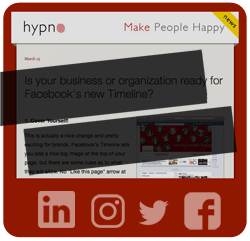QR Codes were never really cool – were they?
Recently a colleague said “QR Codes seem so 10 years ago.” And they’re right, it’s nothing new, and they still look kind of awkward. But QR Codes have made a very strong comeback in the past year. Here’s the scoop why QR codes are back and maybe here to stay.
What is that big ugly thing?
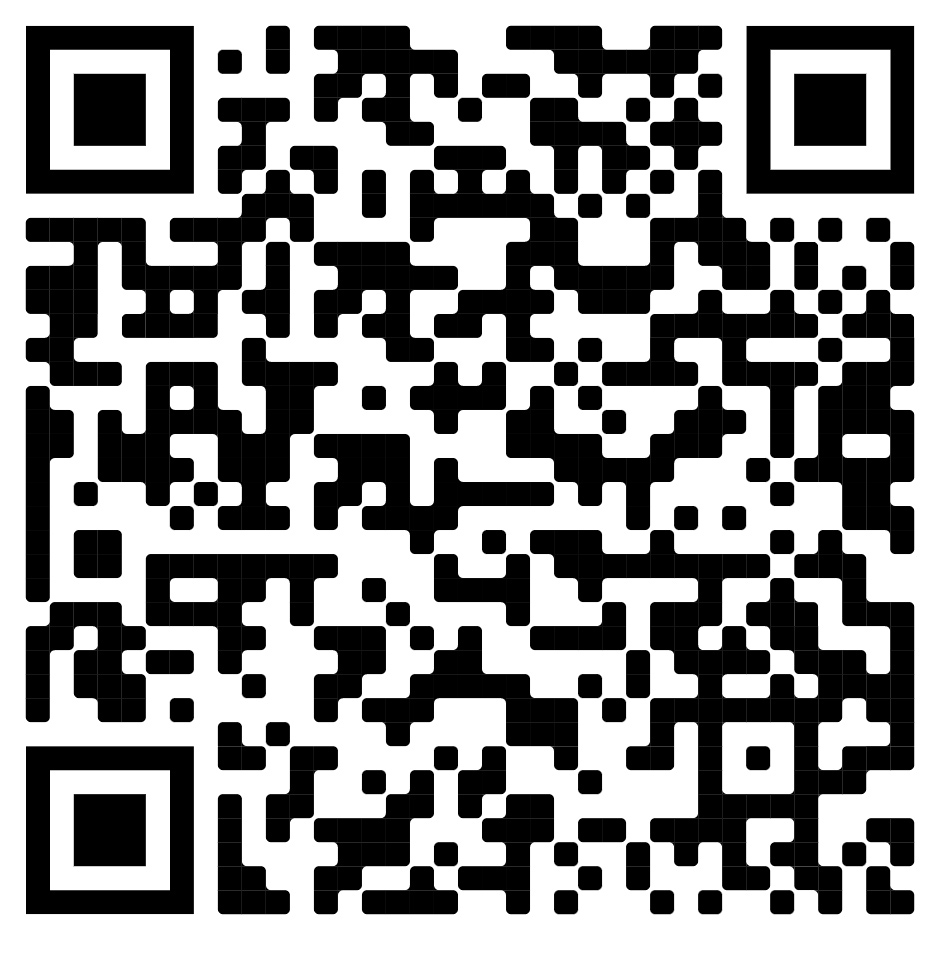 When QR codes first started appearing on the marketing and advertising scene a decade or so ago, I thought it was just a gimmicky fad that would soon pass. While intrigued by the technology that a simple little barcode could be used by the masses to magically convey them to a website, I was also somewhat repulsed that brands were putting these ugly, monotonous, clunky little barcodes next to their beautiful brands and logos. And in exchange for what? A quick way to get people to pick up their phones, use an App to scan the code, and go to their website. You had to have an App on your phone, specifically a QR Code reader. That seemed like a huge hurdle for QR codes to really gain mass adoption. And I really couldn’t get over the look of them. They fit in well with tech brands and products, but on other ones it just felt awkward. Ugly.
When QR codes first started appearing on the marketing and advertising scene a decade or so ago, I thought it was just a gimmicky fad that would soon pass. While intrigued by the technology that a simple little barcode could be used by the masses to magically convey them to a website, I was also somewhat repulsed that brands were putting these ugly, monotonous, clunky little barcodes next to their beautiful brands and logos. And in exchange for what? A quick way to get people to pick up their phones, use an App to scan the code, and go to their website. You had to have an App on your phone, specifically a QR Code reader. That seemed like a huge hurdle for QR codes to really gain mass adoption. And I really couldn’t get over the look of them. They fit in well with tech brands and products, but on other ones it just felt awkward. Ugly.
Do clients love QR Codes? – Not really.
Clients weren’t really asking for them, though we tried a few QR codes out on a few pieces of print collateral here and there, in hopes of extending a message to their websites to handle more than might fit on a postcard or flyer. Use was low, as measured in analytics for our clients’ websites. It wasn’t really worth it.
A Technology before its time?
 Then we worked with a startup client who was a technology company, with a proprietary QR code design who had an interesting idea. With their code, you didn’t need a code reader on your phone, and any camera phone that could snap a picture and send a text message was capable of using their code out of the box. The steps were still burdensome, and ultimately the technology didn’t gain a foothold or momentum in the advertising and marketing world. Snap the photo of the code. Text it to JAGTAG (524824). And that was it. Then JAGTAG’s server would respond by pushing a text to you of either a static photo, a tiny little 500kb or less video, or a URL if they determined you had a web capable mobile device. This way they could either offer coupons for items (think Dunkin subway ads with an instant free coffee code on it). Or they could serve up some cool content in a 30 second video of how to improve your golf swing, on the side of Titleist golf balls. Or they could offer branding messages in-store, videos from the brand about the shoes or leather handbag you were looking at. JAGTAG required a program buy in from a brand. For $X a brand was offered the technology, hosting their content, creative concepts and program, metrics, branding integration, and a monthly service and maintenance for the program fee. And of course data was important part of the bargain, because brands would be able to follow up with more deals later sent via text. Because it was proprietary, the individual code designs could be branded with the colors, and shape of the brand. While in their startup stage, and trying to win new business, Hypno created dozens of tiny brand videos, sample design comps, and graphic assets as their art department. The variety was fun for us to be a part of and offered a lot of creative challenges to flex our creative muscles, but we couldn’t help but feel a little guilty, thinking their product would probably never reach mass cultural adoption. The cost of admission for the brands was high. And people still needed to read instructions along side of the code to use it. Clunky. But it did get an opportunity via partnership with Sports Illustrated, and we got to work on the creative for that campaign. Sadly – somewhere there’s probably an ex-employee of JAGTAG with a JAGTAG code tattoo that goes nowhere nowadays, I suspect.
Then we worked with a startup client who was a technology company, with a proprietary QR code design who had an interesting idea. With their code, you didn’t need a code reader on your phone, and any camera phone that could snap a picture and send a text message was capable of using their code out of the box. The steps were still burdensome, and ultimately the technology didn’t gain a foothold or momentum in the advertising and marketing world. Snap the photo of the code. Text it to JAGTAG (524824). And that was it. Then JAGTAG’s server would respond by pushing a text to you of either a static photo, a tiny little 500kb or less video, or a URL if they determined you had a web capable mobile device. This way they could either offer coupons for items (think Dunkin subway ads with an instant free coffee code on it). Or they could serve up some cool content in a 30 second video of how to improve your golf swing, on the side of Titleist golf balls. Or they could offer branding messages in-store, videos from the brand about the shoes or leather handbag you were looking at. JAGTAG required a program buy in from a brand. For $X a brand was offered the technology, hosting their content, creative concepts and program, metrics, branding integration, and a monthly service and maintenance for the program fee. And of course data was important part of the bargain, because brands would be able to follow up with more deals later sent via text. Because it was proprietary, the individual code designs could be branded with the colors, and shape of the brand. While in their startup stage, and trying to win new business, Hypno created dozens of tiny brand videos, sample design comps, and graphic assets as their art department. The variety was fun for us to be a part of and offered a lot of creative challenges to flex our creative muscles, but we couldn’t help but feel a little guilty, thinking their product would probably never reach mass cultural adoption. The cost of admission for the brands was high. And people still needed to read instructions along side of the code to use it. Clunky. But it did get an opportunity via partnership with Sports Illustrated, and we got to work on the creative for that campaign. Sadly – somewhere there’s probably an ex-employee of JAGTAG with a JAGTAG code tattoo that goes nowhere nowadays, I suspect.
If it’s free – they will come
At the same point in time, QR Codes were now appearing for free, online generators, for mass consumption that anyone could type a URL into, or a string of text to create their own QR code for use in whatever they wanted. When we saw this, we knew that even though it did not offer the instant media response of a video, or audio file sent right to your phone, its free distribution and unlimited text string possibilities meant that it had a much better chance of becoming a standard. Even if you needed a QR code app reader. There are plenty of Free QR Code generators online now, and they even let you add a logo or icon in the middle, or create different looks that can help integrate with your brand more.
Thanks for nothing Apple!
 Jump to the fall of 2017. Apple released a September iOS 11 update, and their camera app now included an integrated QR Code reader. Any of the 728 million iPhone users in the world could now point their camera at a QR code on a boxtop, or in an ad, and get prompted with a website link, or a contact card, map location, or other small piece of digital information they were interested in seeing. In the Spring of 2018 Android phones added the feature through in-camera code scanning in Google Lens. Adding another 128 Million users who had instant code readers.
Jump to the fall of 2017. Apple released a September iOS 11 update, and their camera app now included an integrated QR Code reader. Any of the 728 million iPhone users in the world could now point their camera at a QR code on a boxtop, or in an ad, and get prompted with a website link, or a contact card, map location, or other small piece of digital information they were interested in seeing. In the Spring of 2018 Android phones added the feature through in-camera code scanning in Google Lens. Adding another 128 Million users who had instant code readers.
I still didn’t think QR Codes were cool at all. But occasionally I’d check out a code in stores, or in magazines, to see if any advertisers had made a breakthrough, or were using their codes in an interesting way.
Then along came Covid-19
With the appearance of a world health crisis, that for the first time had significantly made its way to the shores of the US, the public was urged to wash hands frequently, and by implication avoid touching surfaces, and even avoid each other. When we were finally able to come out of hiding and we longed for a return to normality – for outdoor dining, the restaurant industry had come up with a very clever idea, for hands free menu distribution. A QR code on a tent card in the center of the table, which linked to their online menu. In Summer of 2020 when people were anxious to sit at an outdoor restaurant table for their first venture out, they started using their phones to get their menus and wine lists. Now some restaurants even have self-serve food menus available from QR Codes, and even use qr codes for contactless payments.
We’ve started getting used to using QR Codes, out of necessity. By requesting and reading menus, and information without needing to touch something handled by another human’s hands. I still prefer a paper menu though. And they’ve started to appear in places we’ve always trained our eye but never paid too much attention to before. On the plastic wrapper for English muffins. At registers of coffee shops. In magazines and in catalogs. Even on telephone poles for garage sales.
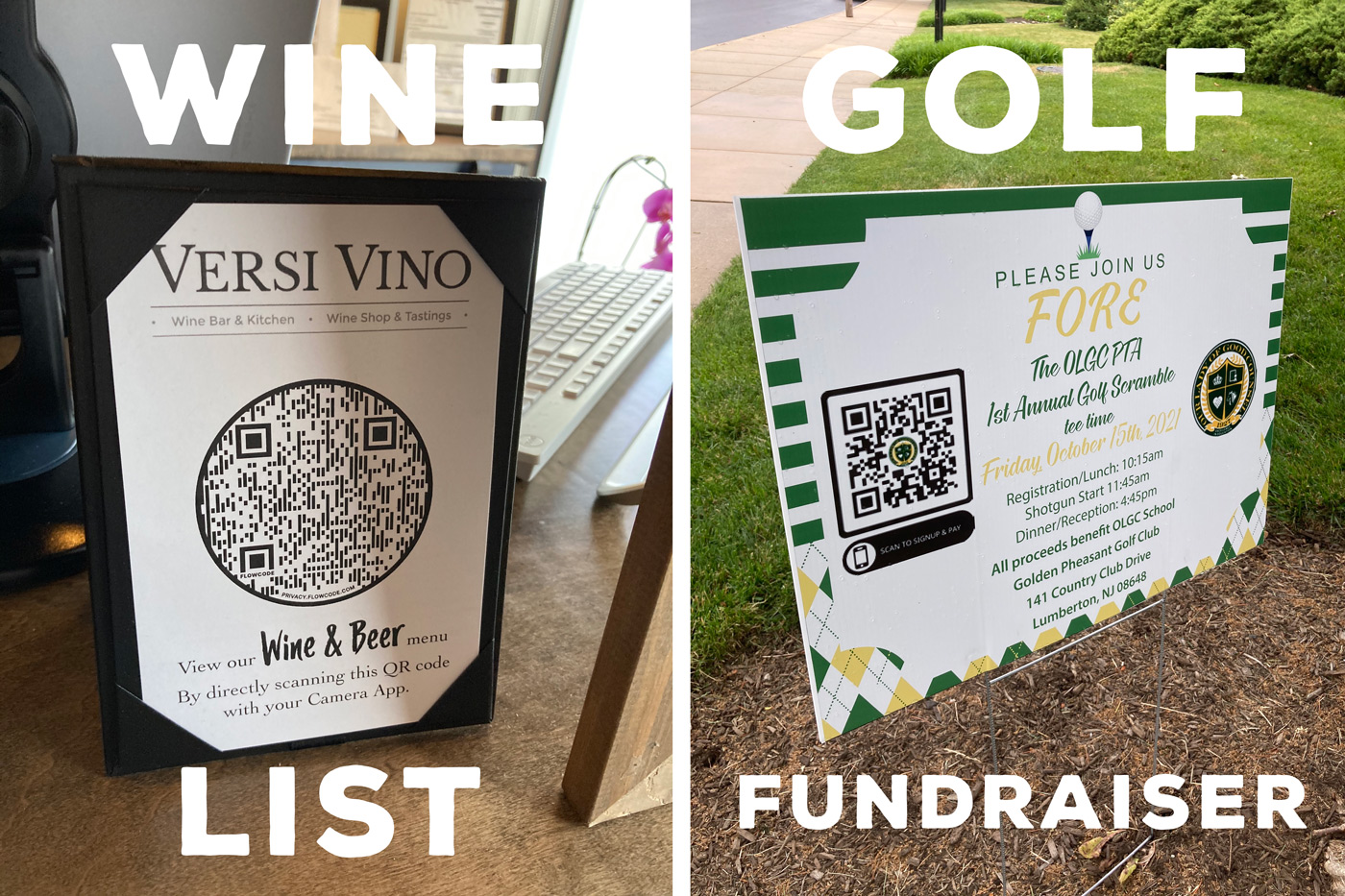
In a recent direct mail branding piece Hypno did for a client, we included a QR code as a fun digital component to take people to a branded webpage with tie-in video content on it, for a little bit more of a fun flavor. All in the name of branding and fun – it just added a little something extra, to round out the fun experience of receiving these colorful and tasty little cupcakes in the mail. Overall the push was a success, and we did get decent action on the website from the QR codes. But it was not as big of a hit, as sending people there via an email later on. We’re still experimenting, and seeing where QR codes make sense to use. And we do think there’s ample reason to try to use them, in 2021 and beyond in marketing and advertising. Perhaps more for utility, than for casual brand experiences. But a big beloved brand might tell a different story.
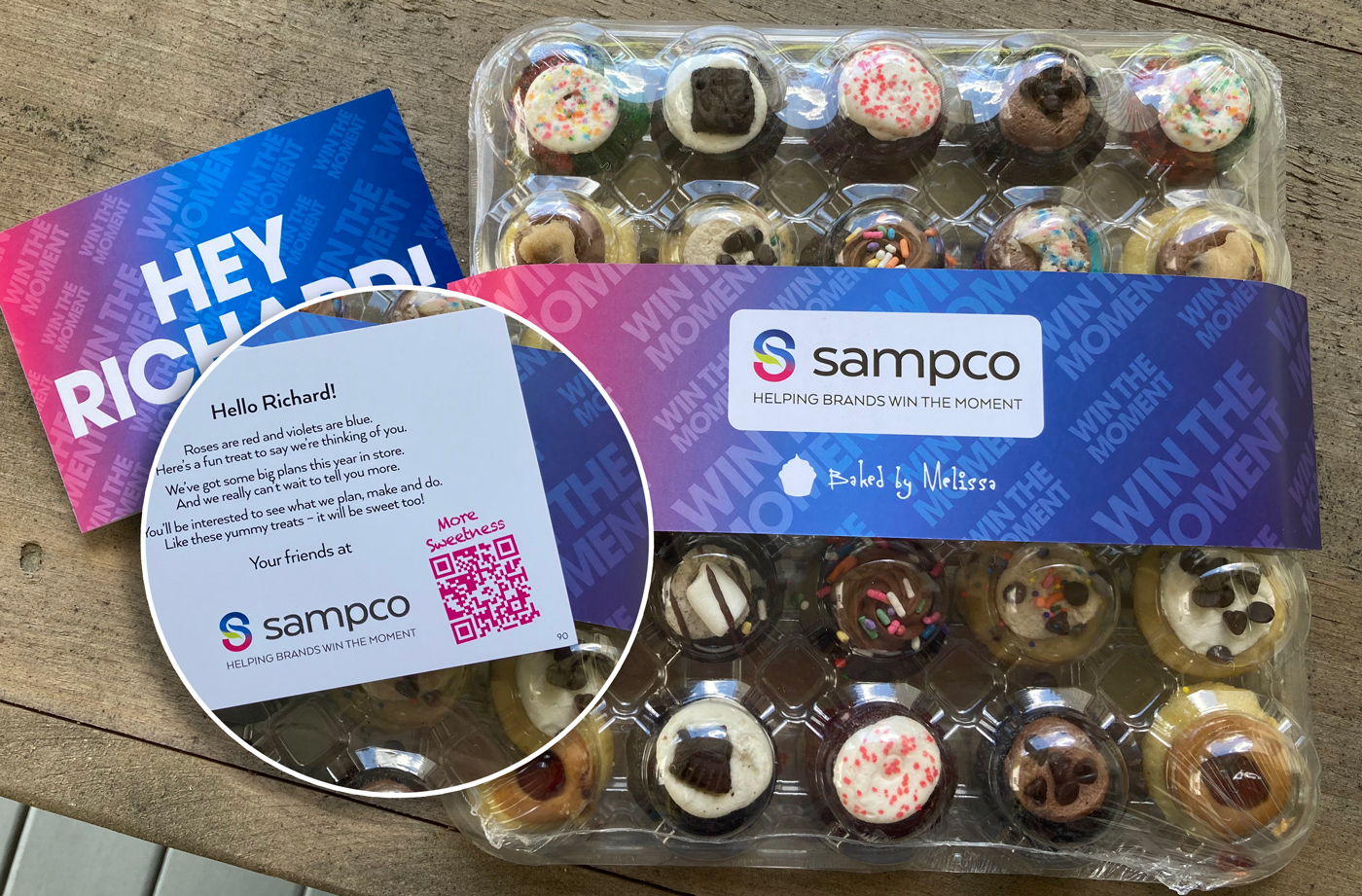
If you’re seeing QR Codes everywhere you’re paying attention!
It seems like you can’t walk down the street without running into a QR code. Start paying closer attention to what they are promoting, and you may come up with a few new ideas yourself!

Amazon invests heavily in QR Codes
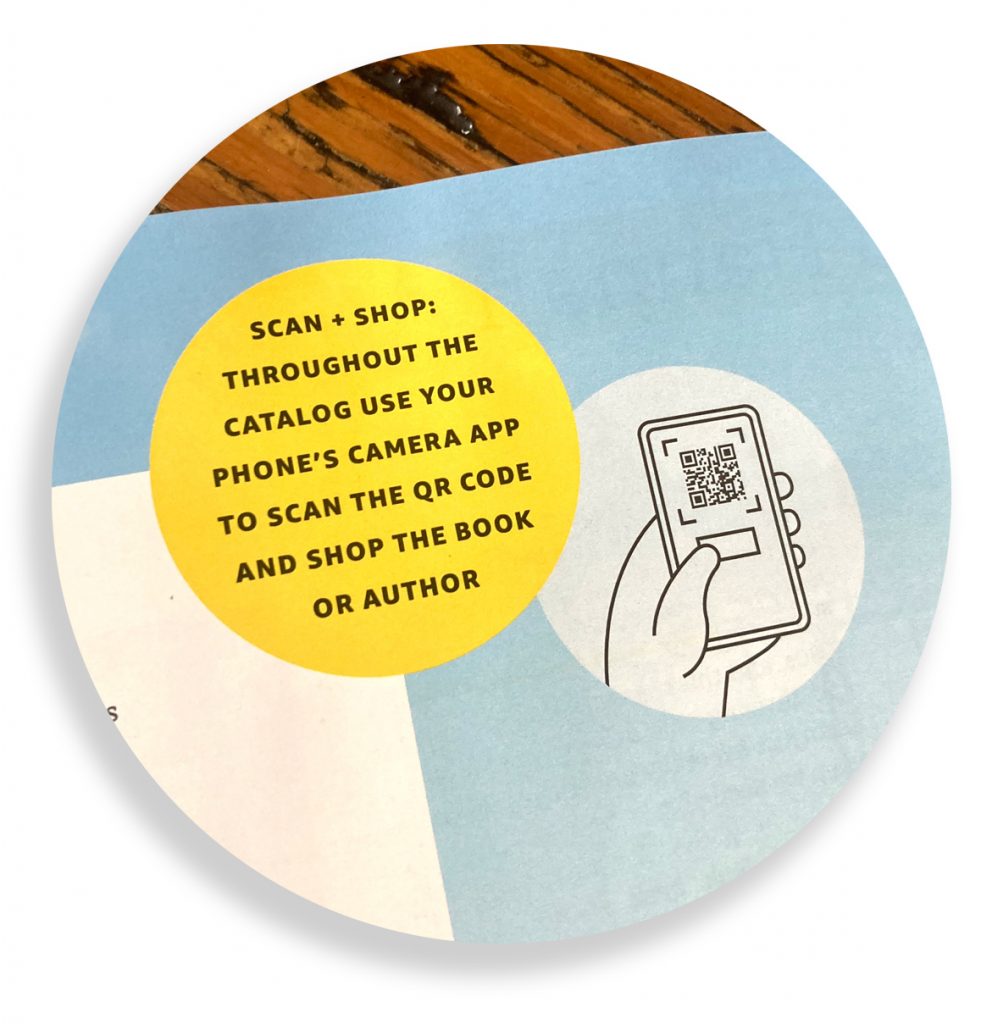
For instance, Amazon has our number. In fact they have our home address, and know what we order, which brands we love, and what demographic we fit snuggly into, and how much we spend (and probably how much money we make). They also know our music preference, how much we’re interested in going outdoors – “hey Alexa what’s the weather today?” Amazon also knows what books we read of course. We also have a Kindle in the house. They probably know more about us than our mortgage company or our accountant. Amazon recently sent my wife a printed catalog – yes, that’s right, the largest digital powerhouse online sales company in the world sent her a 24 page printed catalog of books for the Summer she can order. Besides the somewhat eerie personal reading suggestions pages (based on orders and data Amazon has on what she’s reading) each and every book description includes a little QR code that goes directly to the corresponding ordering page on their site or App. I guess we’re okay with being married to Jeff Bezos?

How many people does it take to put together an Amazon Catalog with QR Codes? This Holiday Toy List video might shed some light on that… They did this in 2019. Quite an investment in marketing in print, and in QR codes.
QR Codes on your TV
Hulu is using QR codes when you pause the show you’re watching. They’re calling it… drumroll please… the Pause Ad.
The interesting thing is that advertisers can either have Hulu generate the QR code or use their own. But the advertisers using their own must agree to sharing the scan data with Hulu. Don’t forget that when you use a QR code, you are generating scan data that is valuable for the company code you’re scanning, as well as the venue or media it appears within. It’s interesting too that Hulu is billing these ads as non-disruptive, non-intrusive, and even “user requested” – a user has to pause their show for them to appear. The latest one we experienced was for Charmin, encouraging us to “Enjoy the Go.” I kind of have a problem with that tagline anyway but I guess they thought that someone was headed for a bathroom break. Not a bad assumption I suppose. Perhaps we’ll see QR Codes on our roll of toilet paper in the near future? Then we’ll never need to leave the bathroom.

What do you think? Have QR Codes made a heroic comeback and are they here to stay? Or is it just a passing fad, and as Covid fades away, so will our use of these silly looking little squares of dots-and-dashes. Tell us your take on it… Get in touch!
What's on your mind?
More Articles, Musings and Occasional Rants
Marketing Your Real Estate Biz: How to Win Friends and Influence Clients (Without Losing Your Mind)
How to DIY for Real Estate Agents and Realtors looking to market and brand themselves better, and on a budget. Real estate templates to the rescue!
Hypno launches Workspace Financing Website
Hypno recently completed a project for a new client, Waddell Capital Group, launching their new website at Workspace Financing.com Did you know you can...
Hypno Helps Printer with Marketing to National Ad Agencies
A knock-out project Hypno created for our commercial print client, Qualprint. Qualprint prints exceptional, beautiful, craftsmanlike work for top...

